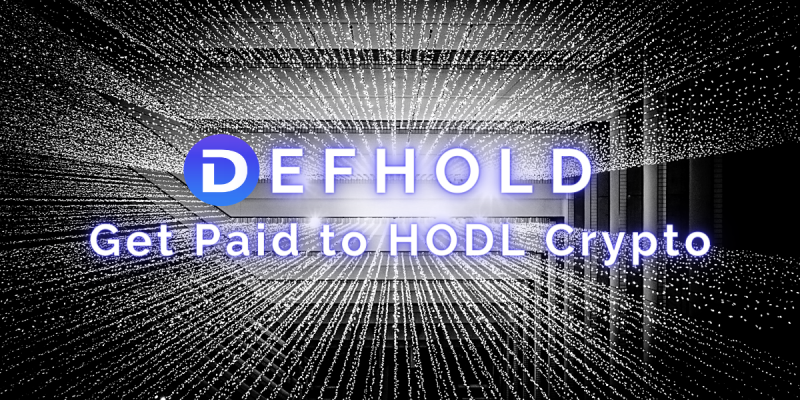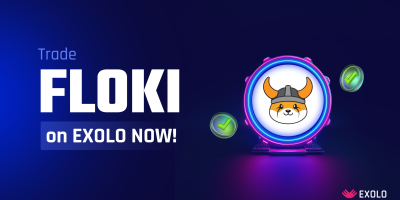Have you ever thought of saving crypto? Well, this is almost impossible thanks to market volatility characterized by market dumps. While the DeFi sector is rapidly expanding, speculative investors easily liquidate their holdings, causing a rapid sell-off. This leads to a rapid decrease in the value of a DeFi project. DefHold attempts to streamline the DeFi sector by solving inflation and providing incentives to speculative traders to hold cryptocurrencies during market dumps and consequently generate yields on the underlying assets.
DefHold achieves this by implementing new autonomous yield generating solutions. Here’s a comprehensive review of the first non-inflationary staking and farming system designed to reward long-term holders.
DEFHOLD Overview
DefHold describes itself as a non-inflationary DeFi ecosystem that seeks to offer yield generating investments’ strategies to long-term crypto holders. Currently, a conventional means of securing assets during market dumps and pumps is to convert assets to stable coins. The stable coins can thereafter be staked or farmed into various DeFi protocols generating yields on the underlying asset.
But this means of securing assets during markets’ dump and pump has the undergoing of price drop leading to losses. DefHold seeks to reward long-term crypto investors with accurate portfolios and own liquidity’s management by implementing new autonomous yields generating solutions. In the future, the platform will also launch a fully decentralized governance system allowing users to make crucial decisions regarding the project’s future developments and vote on essential network upgrades such as different lock-up periods, transfer fees, vote to launch new tokens, etc.
DEFHOLD Pays You to HODL
DefHold’s innovative non-inflationary staking and farming system pays you to HODL your tokens. The DEFHOLD ecosystem encompasses multiple yields generating mechanisms that compensate investors for holding tokens during a market dump or pump. This offers investors access to multiple revenue streams, i.e., yield-generating investments, without having large capitals.
Unlike most DeFi platforms, which leverage a business model that depends on inflationary tokens, DefHold combats inflation with the capping of DEFO tokens at 12,000 DEFO. The protocol isn’t planning to issue any additional tokens to prevent inflation by ensuring scarcity.
DeFi platforms that employ a business model and issue more tokens often mint these tokens to enhance their APY (Annual Percentage Yield). However, this strategy exposes the market to multiple threats, which could lead to its failure. Also, the value of tokens in circulation always drops in value once a DeFi platform releases additional tokens to the market. Enhanced token inflation coupled with speculative investors’ impulsive actions causes a myriad of problems such as runoff sales that lower the value of a DeFi project.
About DEFO-The Non-Inflationary Yield Generator
DEFO is the DefHold ecosystem’s native token, enabling holders to stake or farm their assets into pools with different predefined lock-up periods. However, investors (farmers and stakers) can still be able to withdraw their assets before the term of the lock-up period at any time by paying an early withdrawal fee (EWF).
DefHold will employ various revenue streams to reward stakers and farmers who have accurately managed their portfolios and their own liquidity requirements. The first revenue stream will be the early withdrawal fee (EWF) charged when stakers and farmers withdraw their assets before the asset lock-up period expiry. The EWF funds are collected then split up among the remaining members.
The second yield generating mechanism is transfer fees. The platform will charge a small transfer fee on every DEFO token’s transfers. The collected fees will then be split proportionally among stakers and farmers.
These 2 revenue-generating mechanisms will continuously generate yields to stakers and farmers in a non-inflationary way. Unlike other DeFi platforms that leverage inflationary tokens to enhance their APY, DefHold will not produce additional DEFO tokens, in turn keeping their supply low. By channeling revenue to the farmers and stakers, DefHold ensures that investors hold on to the investment strategy even during a market dump.
Revenue Allocation
As mentioned above, DefHold will have two different revenue streams to be shared between the stakers and farmers, i.e. (EWF + Transfer fee). These revenues will be allocated as below:
EWF revenues allocation:
5%: to developer fund
95%: to stakers/farmers according to their share of their respective pool
Transfer fee revenues’ allocation:
5%: to developer fund
40%: to stakers (equally shared between all the staking pools)
55%: to farmers (equally shared between all the farming pools)
DEFO Staking & Farming
DEFO token powers the DefHold ecosystem. The token has several use cases in the ecosystem. The primary use case is a staking or farming token where users farm/stake their assets in pools with pre-defined lock-up periods using the token. Currently, DefHold users can stake DEFO tokens or farm DEFO/ETH& DEFO/USDT LP tokens. In the future, DefHold seeks to add additional token pools depending on the community proposal.
The non-inflationary staking & farming pools are as below.
Staking Pools
| Pools | Lock-up Period | EWF |
| 1st Pool | 10 days | 1% of staked DEFO |
| 2nd Pool | 30 days | 3.5% of staked DEFO |
| 3rd Pool | 60 days | 8.2% of staked DEFO |
| 4th Pool | 90 days | 14.3% of staked DEFO |
| 5th Pool | 180 days | 33.33% of staked DEFO |
Farming Pools
| Pools | Lock-Up Period | EWF |
| 1st Pool | 10 days | 2% of farmed LP tokens |
| 2nd Pool | 30 days | 7% of farmed LP tokens |
| 3rd Pool | 60 days | 16.3% of farmed LP tokens |
| 4th Pool | 90 days | 28.6% of farmed LP tokens |
| 5th Pool | 180 days | 66.6% of farmed LP tokens |
How Will DefHold Enhance Liquidity
Liquidity has turned out to be vital for DeFi platforms, especially after the entrance of decentralized exchanges (DEX). To enhance liquidity, DefHold implements two primary mechanisms listed below.
- EWF and transfer fee revenues are distributed mostly to farmers to enhance their revenues and incentivize them to offer liquidity to the DefHold ecosystem.
- The platform will conduct a presale using the Liquidity Dividends Protocol (LID). In the sale, 75% of the raised ETH will be allocated to Uniswap liquidity and locked by the smart contracts. This will protect investors against dumping and exit scams.
Closing Words
To conclude, DefHold is a non-inflationary DeFi ecosystem which will transform the DeFi space by providing yield generating investments’ strategies to long-term crypto holders. The platform will surely solve inflation and the problem of impulsive speculative investors who are easy to spook, causing a drop in the value of DeFi projects.












Comments